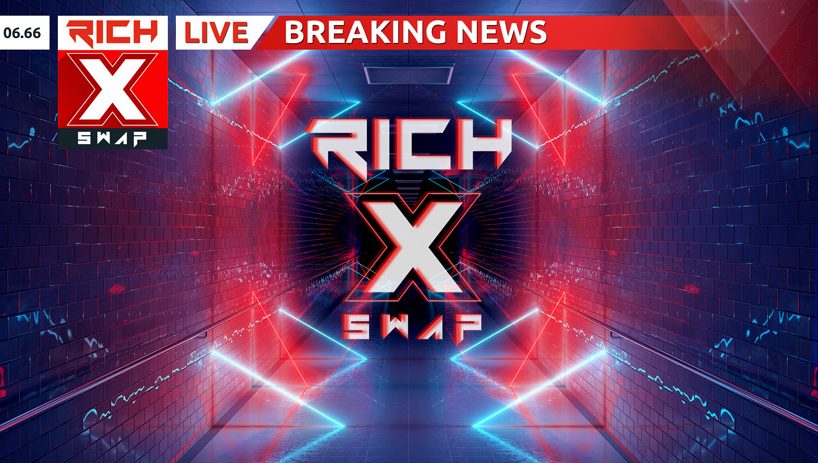
Everything you need to know about the next Bitcoin – Bitcoin Cash.
► Get up to a $250 in Digital Currency: https://blockfi.com/andrei
► Where I Buy Bitcoin: https://gemini.sjv.io/1E3dz
► My Stock Portfolio + Stock Tracker: https://www.patreon.com/andreijikh
► Get 2 FREE stocks valued up to $1850 (when you deposit $100): https://act.webull.com/kol-us/share.html?hl=en&inviteCode=QhhB1aDNwEDP
► MY DISCORD: https://discord.gg/9TVPxj73Bb
► Open A Roth IRA: https://m1finance.8bxp97.net/c/1980551/696710/10646
► Follow Me On Instagram: https://www.instagram.com/andreijikh/
► How I Protect My Bitcoin: https://shop.ledger.com/pages/ledger-nano-x?r=535643c13ab0
My PO Box:
Andrei Jikh
4132 S. Rainbow Blvd # 270
Las Vegas, NV 89103
WHAT IS BITCOIN CASH AND HOW IS IT DIFFERENT THAN BITCOIN?
Bitcoin and Bitcoin Cash are identical in how they work, they both have the same blockchain technology, they both have 21 million coins that will ever exist, they are almost identical in every way but they represent two different social experiments. Today Bitcoin BTC is the digital gold of the future. And Bitcoin Cash is trying to become digital cash of the internet like it says in the original white paper.
WHAT IS THE WHITE PAPER?
The white paper was published by Satoshi Nakomoto in 2009 where he described what Bitcoin was and what it was meant to do. He titled it “Bitcoin: A Peer-To-Peer Electronic Cash System”. https://bitcoin.org/bitcoin.pdf
THE BITCOIN PROBLEM:
As Bitcoin started to gain popularity from people sharing their story about how they got rich with Bitcoin, two things started to happen.
1. Volatility. Bitcoin would go up to $10, and fall back down to a dollar, it would go to $100, and fall back down to $10, then it would go from $100 to $1,000 back down to a $100.
2. Bitcoin reached something called “the scaling problem” which happens to all things in tech once they become popular. How do you scale a technology from a hundred to people to a million people, to a billion people? If Bitcoin is to compete with payment processors like Visa, it has to make sure it can back it up. Unfortunately it can’t.
THE SCALING PROBLEM:
Visa averages 1,700 transactions per second. Bitcoin handles about 4 per second. In order to bring Bitcoin to everyone in the world as a usable currency, it needs to scale. Bitcoin had a fundamental disagreement with itself about how to fix this problem and in August of 2017, Bitcoin Cash was born.
THE SCALING DEBATE:
How do you scale Bitcoin? Should we make the blockchain larger? Or should we scale off the blockchain? There are pros and cons to both.
SCALING ON CHAIN:
People in the camp of Bitcoin Cash (BCH) wanted to increase the block size from 1MB to 8Megabytes (BITCOIN CASH POINTS TO HIMSELF). So instead of 4 transactions per second, it can do 32 transactions per second. This would allow more transactions to be included in the block and thus make them cheaper. The roadmap includes continually scaling the blocks as needed.
SCALING OFF CHAIN:
People who were on the side of Bitcoin (BTC) wanted to scale off chain with a second layer solution called the Lightning Network which theoretically allows millions of transactions per second for almost free.
THE DOWNSIDES:
Scaling on chain is simple and straightforward. Unfortunately it comes at the expense of decentralization. If Bitcoin succeeds as a currency, the blocks would become so large that only wealthy individuals (corporations) could afford to run a node. If corporations are the only ones that can do that, they would be susceptible to regulations from the government.
Scaling off chain gives us virtually unlimited performance – if it worked. The lightning network is already here but it doesn’t work at scale yet. It still carries risks. This is because scaling off the blockchain means creating an entirely new technology that is no longer the blockchain. Other risks include privatization and/or recreating the fractional reserve banking system.
HOW DOES LIGHTNING WORK?
Lightning works by two people opening up a channel (paying on an chain fee), and depositing any amount of Bitcoin into a reserve wallet (ideally through a smart contract). The users are now free to exchange IOUs that represent the original staked coins, but the original coins are not actually moved until the channel is closed out and the transaction is settled on the blockchain. Think of it as Gold (layer 1), issuing FIAT to represent that gold (layer 2), which we then transact with.
MY PERSONAL THOUGHTS
Watch and enjoy the video.
*None of this is meant to be construed as investment advice, it’s for entertainment purposes only. Links above include affiliate commission or referrals. I’m part of an affiliate network and I receive compensation from partnering websites. The video is accurate as of the posting date but may not be accurate in the future.


